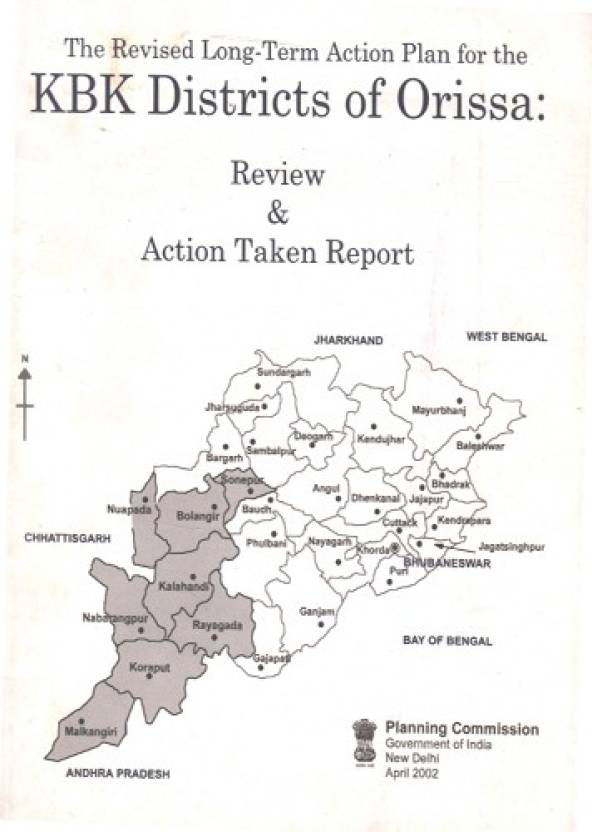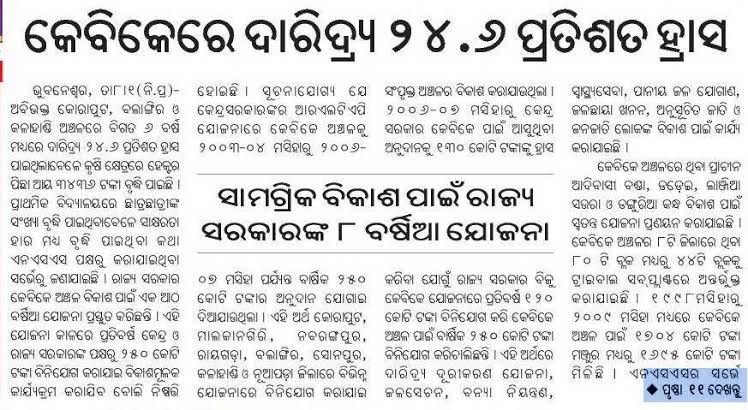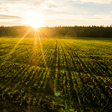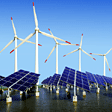INTRODUCTION
An overview of the performance of the various developmental efforts over the years in Odisha reveals that not all the regions in the state have been developed uniformly. While some regions have progressed at a skyrocketing pace, others have continued to struggle with the vicious cycles of poverty, malnutrition, illiteracy, unemployment, water scarcity, famines, droughts, etc. Despite sustained efforts to develop all parts of the state, regional disparities have continued to exist. The KBK Districts are living examples of this dire situation.
KBK stands for Kalahandi-Balangir-Koraput Region. They were regarded as the most backward and one of the poorest regions by the planning commission. During 1992-93, the three larger districts were re-organized into eight districts - Malkangiri, Koraput, Nabrangpur, Kalahandi, Rayagada, Nuapada, Balangir and Sonepur. These eight districts comprise 14 Subdivisions, 37 Tehsils, 80 CD Blocks, 1,437 Gram Panchayats and 12,293 villages. More specifically, 49 CD Blocks of KBK districts are regarded as "very backward" and 28 CD Blocks are considered as "backward".
But the State Government has remained deeply committed to remove these regional imbalances and inequities. In order to achieve this objective, the State Government has formulated, in consultation with the Government of India, a Long Term Action Plan (LTAP)/Revised Long Term Action Plan (RLTAP) for speedy development of the KBK Districts.

DEMOGRAPHIC FEATURES OF THE KBK DISTRICTS
Geographical Area :
KBK Districts comprise of 30.6% of the total geographical area of the state.

POPULATION:
KBK Districts account for 19.72% population of the state.

-
Lower population density (153 persons / sq.
km) in comparison to 236 for Orissa indicates difficult living conditions and
an underdeveloped economy.
-
Around 90% of the people of this region still live in villages.
-
The literacy rate at 43.3% is much lower than the State average of 63.1%.
-
The female literacy rate 29.1% also compares unfavorably with the State average of 50.5%.
-
The population suffers from high morbidity on account of under-nutrition as well as endemic malaria and other localized diseases.
-
As per the 2001 census of BPL families, about 72% families are Below Poverty Line.
-
Tribal communities dominate this region. As per 2001 Census, about 38.41% people of these districts belong to the Scheduled Tribes (ST) communities including four primitive tribal groups (PTG), i.e., Bondas, Dadai, Langia, Sauras and Dangaria Kandhas.
PROBLEMS IN KBK DISTRICTS :
-
PERSISTENT CROP FAILURE
-
LACK OF ACCESS TO THE BASIC SERVICE AND ENTITLEMENTS
-
STARVATION AND MALNUTRITION
-
MIGRATION
-
LACK OF IRRIGATIONAL FACILITIES
-
NATURAL CALAMITIES
PROSPECTS FOR KBK DISTRICTS
Special Area Development Approach:
Removal of regional disparities has been one of the important planks of the development strategies adopted by Government of India as well as the State Government during successive Five Year Plans. However, due to several economic, social and institutional obstacles, this region in Orissa has not shared gains of development in an equitable manner and continues to languish in abject poverty. Heavy incidence and persistence of poverty in this region has been a cause of concern for the State Government as well as the Government of India. Therefore, in consultation with the Government of India, State Government has adopted a special area development approach for this region with a view to focusing attention on it and accelerating its development. A Long Term Action Plan (LTAP) for the KBK districts was formulated in consultation with the Government of India for a period ofseven years from 1995-96 to 2001-2002 and was formally launched by the then Prime Minister on 18.08.1995. LTAP was formulated with two principal objectives in view: (i) drought and distress proofing, and (ii) poverty alleviation and development saturation. However, only a meager allocation of Rs. 20.49 crore was received as additional assistance during the first three years from 1995-96 to 1997-98 against the State Government demand of Rs. 389.21 crore. Therefore, LTAP: 1995-2002 did not take off for want of availability of sufficient funds.
Revised Long Term Action Plan (RLTAP): 1998-99 to 2006-07:
A Revised Long Term Action Plan (RLTAP) for the KBK districts was submitted to Government of India for their advice in 1998. The project was prepared in a sub-plan mode to address the peculiar socio-economic problems of this chronically poor region. This project envisaged an integrated approach for speeding up the socio-economic development of this region by synergizing effectively various developmental activities and schemes under implementation both in Central as well as State sectors. The critical gaps in the development efforts as well as resources bridged through Special Central Assistance (SCA) as a special dispensation. Therefore, there was a pooling of resources from different sources like:
(i) normal flow of funds to KBK districts under Central Plan and Centrally Sponsored Plan Schemes,
(ii) additional funds fromGovernment of India exclusively for programmes in KBK districts as
agreed by the Planning Commission; and
(iii) Central assistance under programmes of Government of India to be implemented in KBK districts with some relaxation in norms such as Accelerated Irrigation Benefit Programme for earmarked irrigation projects. A total requirement of funds to the extent of Rs. 5,527.41 crore (Rs. 4,787.11 crore Central Share and Rs. 740.30 crore State Share) was projected over the entire
project period of nine years from 1998-99 to 2006-07.
The objectives of the RLTAP are:
• Drought proofing,
• Poverty alleviation and development saturation, and
• Improved quality of life for local people.
Strategies For Development Of KBK Districts :
In order to achieve the aforesaid objectives, the following strategies are
being followed:
-
Building rural productive infrastructure (e.g., roads, bridges, irrigation projects, tanks, watershed development, markets, warehouses) and conserving natural resources (e.g., forests, soils and water).
-
Development programmes for income generation on sustainable basis (e.g., productive rural infrastructure, SGSY, SGRY, EAS, agriculture development, and micro-credit support).
-
Mobilizing and energizing the rural poor (e.g., Self Help Groups, Vana Samrakshana Samities, Pani Panchayats, and Bhumi Panchayats).
-
Restructuring and energizing social security system (e.g., emergency feeding programme, special nutritional programme for children under 3 years, mobile health units, promotion of education among ST/SC girls).

1.jpeg)










 Previous : Environmental Sensitization an...
Previous : Environmental Sensitization an...









5 Comments
Thank you so much everyone for taking the time to go through my report and for your valuable feedbacks. :D
Posted 03-05-2019 00:22
Hello Ananya
I do hope that you are fine and doing great with your works. Thank you for your report about KBK Districts - Special Area Development - Problems and Prospects.
Green Cheers from Nepal :)
Keep writing great reports.
We are eager to read more reports from you.
Yours,
Kushal Naharki
Posted 10-04-2019 20:07
Hello Ananya
Thank you for your thorough report. However, I want to point out two things. First of all, while I read you report, I could not find any clear link between KBK districts and environments. When you choose a subject, please keep in mind that Tunza eco-generation is where we share environmental issues : ) Also, when you have referred to a certain report or website, you must write down the reference at the end of your report. You can??t just copy and paste the whole paragraph. Since you added your opinions in this report, this will be counted as your monthly report but please keep in mind these two points.
Wonhee Mentor
Posted 02-04-2019 02:14
Hi Ananya,
I really appreciate your report and I had great time reading this. Although due to the time constraint, I could not provide you with a detailed feedback, I'd like to point out that you did a great job!
Keep up good work :)
Louis Mentor
Posted 01-04-2019 21:04
Hello ananya
It??s good to acknowledge that government is taking initiative for the development of Kalahandi-Balangir-Koraput Region.
Thank you so much for this report.
Green cheers
Posted 28-03-2019 02:29